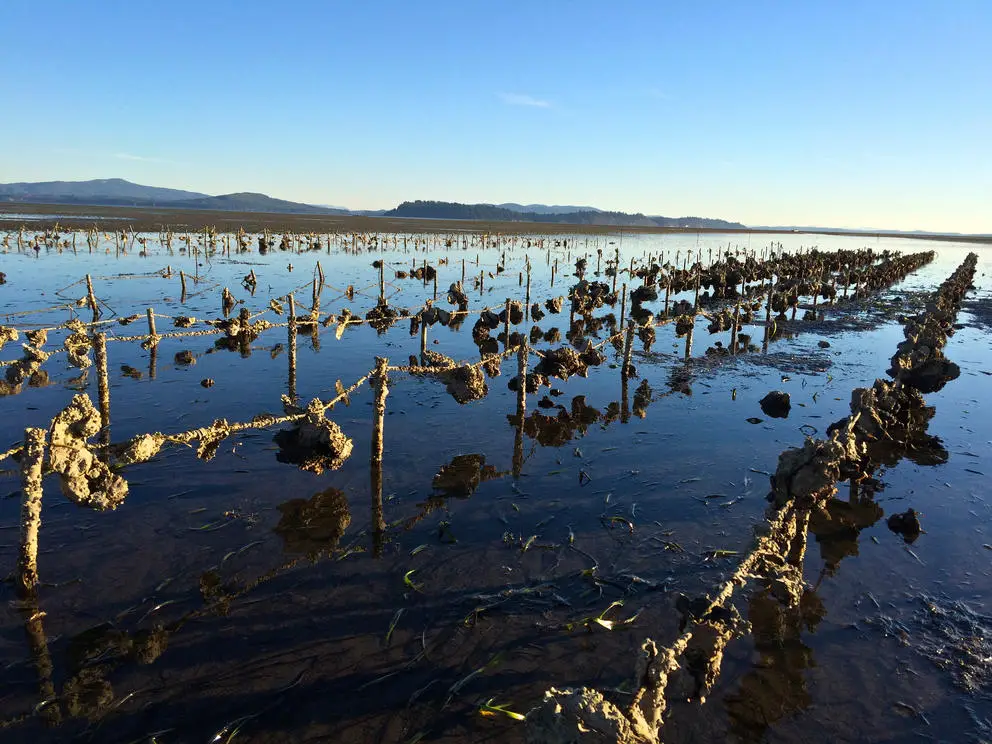Stantec—a global engineering, architecture, and consulting firm—recently completed the second phase of the Twin Harbors Sediment Study, a critical project aimed at revitalizing the local shellfish industry in Pacific County, Wash. In partnership with the Grays Harbor Conservation District (GHCD), Stantec developed a coastal model of the Grays Harbor and Willapa Bay estuaries to estimate and predict scour and sediment deposition as it impacts the oyster industry. The firm released its key findings related to the hydrodynamics of these bays. Hydrodynamics and sediment response affect oyster production and survival. The oyster industry is a critical economic driver for this rural and economically depressed region of Western Washington.
GHCD initiated a three-phased process in 2015 to investigate the growing impacts of shellfish decline in the twin harbors. Phase I included a literature review and general analysis to identify Phase II next steps. During Phase II, Stantec gained a better understanding of the sedimentation and erosion dynamics in Grays Harbor and Willapa Bay, identified areas of impact and potential new sites for shellfish aquaculture, and defined potential mitigation measures in greater detail to offset impacts to shellfish growing beds. In addition to leading coastal model development, the global firm captured ultra-high-resolution imagery of the estuaries and performed an in-depth analysis of where the most active sediment is, while identifying stable areas of sediment where oysters can grow safely.
Major findings from the study include:
• The twin harbors are a complex ecosystem involving contributions from the Pacifi¬c
Ocean, redistribution of the sediments within the harbors, and impacts from inland
watersheds.
• Resuspension and redistribution of the sediments within the harbors is mainly due to
wind-driven waves during strong wind conditions in winter. Potential mitigation
measures were evaluated, including the careful placement of artificial reefs.
• Burrowing shrimp activities worsen the sedimentation issues in Grays Harbor and
Willapa Bay. The shrimp liquify the sediment, burying oysters and other flora and
fauna and reducing biological diversity.
Grays Harbor has long been one of the most productive shellfish aquaculture areas in the US, with 25% of the country’s oysters cultivated here and in neighboring Willapa Bay. Shellfish aquaculture and related jobs are key components of the local and regional economy, and shellfish themselves provide ecological benefits to the estuary—facilitating water filtration, juvenile fish and crustacean habitat, and healthy benthic fauna.
Shellfish aquaculture has been suffering from excessive sediment movement from Pacific Ocean influence, nearby river flow, upstream watershed conditions, and changes associated with human activity within the Bays. The problem, reported on since 1990, has deteriorated, which has caused continuous impact to commercial shellfish cultivation.
“Shellfish farming is a critical lifeline for rural Western Washington,” said Wayne Wright, Stantec principal scientist and project manager, based in Bellevue. “In addition to their commercial importance, shellfish are central to tribal cultures and contribute to recreational opportunities and tourism, while providing critical benefits to the surrounding ecosystem. We’re proud to have played a part in helping the Grays Harbor Conservation District and the local shellfish growers protect this vital resource. We appreciate the partnership we’ve built through this project with all the key stakeholders.”

